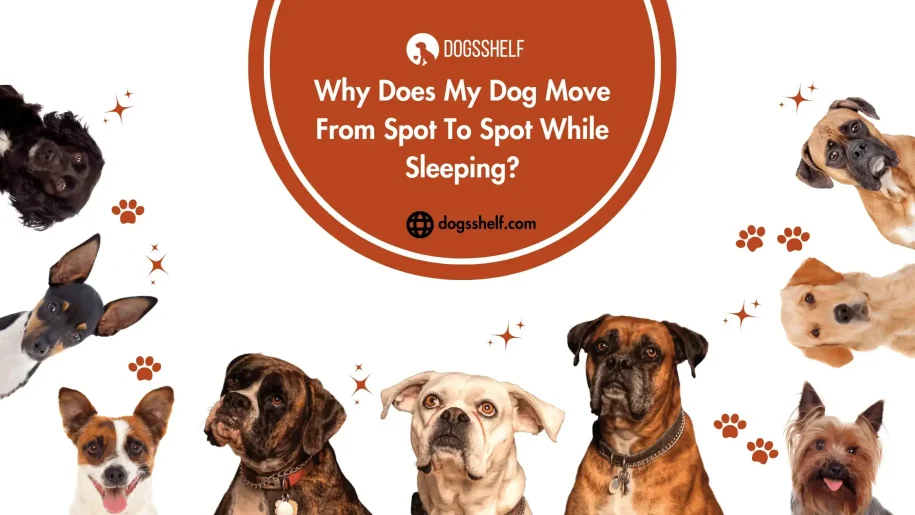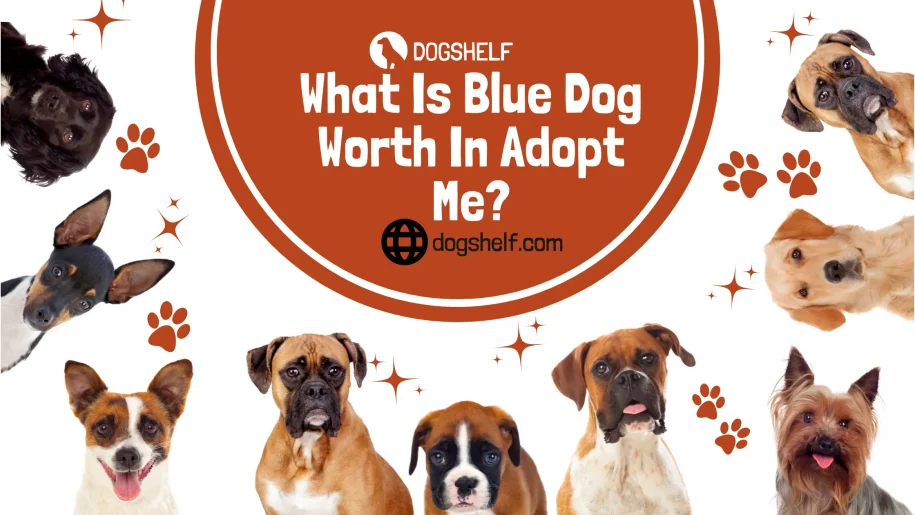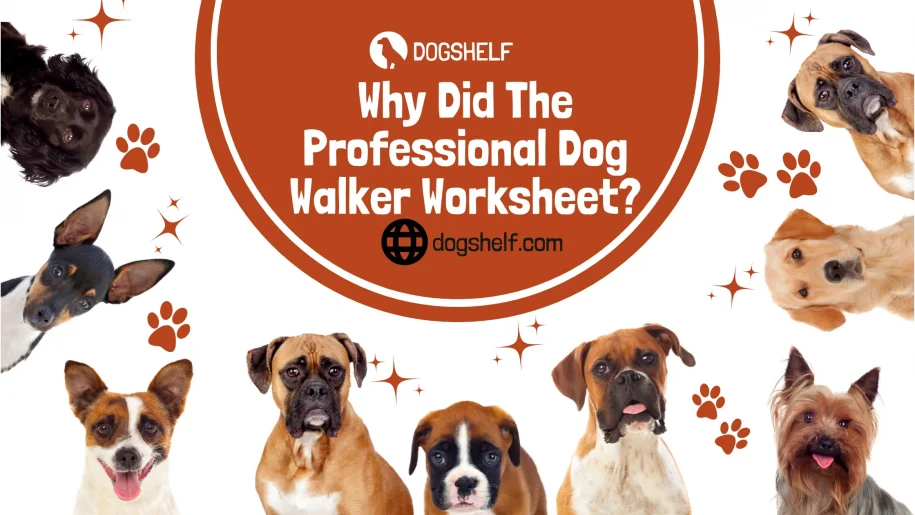We’ve all seen your pup snuggled up comfortably on the couch one minute, then an hour later, he’s nestled in a different corner of the room. You may wonder why your dog moves around so much while sleeping and if any underlying issues could explain his behavior.
The truth is that there are many contributing factors as to why your puppy may switch spots during their nap time, but don’t worry!
We will discuss some of these possibilities, such as temperature regulation or comfort-seeking behaviors, giving you greater insight into why your furry pal does what they do. Let’s dive in!
The Role of Temperature: How It Influences Your Dog’s Choice of Sleeping Spot?
Dogs regulate their body temperature differently than humans. While they can sweat a little through their paw pads, they mainly regulate temperature through panting.
In colder weather, you might find your dog seeking out warmer spots, like against a heater, under blankets, or nestled against you. In contrast, they prefer more excellent surfaces like tile floors or shady areas during hotter periods.
The Comfort Factor: Why Your Dog Might Be Seeking Out Different Textures?
Just as humans prefer firm or soft mattresses, dogs might seek certain textures that provide them with the most comfort. Some dogs like the softness of a couch or bed, while others might prefer the firmness of the floor.
Dogs with joint issues might find softer surfaces more comfortable, while others might seek firmness for better support.
Exploring The Impact of Noise: Does Sound Influence Your Dog’s Sleeping Spot?
Dogs have sensitive hearing. Loud or unusual noises can disturb their sleep or make them feel unsafe. A dog might seek a quiet place if the environment is too noisy. Conversely, some dogs are comforted by the soft sounds of a TV or radio, as they can simulate the presence of humans.
Sudden loud noises can cause a dog to move or even exhibit the “startle reflex” during sleep.
The Role of Hunger In Your Dog’s Sleep Movements:
A hungry dog might be restless and move around more for food. Dogs used to a feeding schedule might become restless as the following mealtime approaches.
Health Concerns: Could Medical Issues Be Causing Your Dog to Move While Sleeping?
Dogs with pain or discomfort, such as from arthritis, might shift frequently to find a comfortable position. Other medical issues, like urinary tract infections, could cause your dog to get up often at night. It could be worth a vet visit if your dog is frequently moving, twitching, or whimpering in their sleep.
The Influence of Age: How Puppies And Older Dogs Differ In Their Sleep Movements?
Puppies:
They have a lot of energy and also need a lot of sleep. When they do sleep, it’s deep. Puppies might exhibit more twitching during REM sleep, which is entirely normal.
Older Dogs:
They might sleep more profoundly but also be more restless due to health issues. As with humans, older dogs can face challenges like joint pain or the need to urinate more frequently.
Understanding Canine Behavior – The Natural Instincts Driving Your Dog’s Movement:
Despite being domesticated over thousands of years, dogs still possess natural instincts that drive many of their behaviors. Understanding these instincts can provide valuable insights into why dogs act the way they do. Here’s an overview of some primary canine instincts and how they influence dog behavior:
Pack Behavior:
Origin: In the wild, canines often live in packs, which provides safety, social interaction, and cooperative hunting.
Manifestation in Domestic Dogs: This is seen in how dogs interact with family members or other pets. They may view the family as their “pack” and establish a hierarchy. Dogs might follow a leader (often a human caretaker) and can sometimes display protective behavior towards pack members.
Territorial Behavior:
Origin: Marking territory ensures a safe space for a pack and reduces confrontations with other packs.
Manifestation in Domestic Dogs: Dogs often bark at strangers approaching their home, dig boundaries, or mark their territory using urine.
Prey Drive:
Origin: Wild canines hunt to eat.
Manifestation in Domestic Dogs: Even if they’re well-fed, many dogs still have a strong prey drive. This can be seen in behaviors like chasing moving objects, pouncing on toys, or stalking.
Hoarding:
Origin: In uncertain conditions, wild canines might bury food to hide it from other predators and to save it for later.
Manifestation in Domestic Dogs: Some dogs bury bones, hide toys, or store food, especially if they’ve experienced food scarcity.
Denning:
Origin: Wild canines often seek shelter in dens, which offer safety and a place to raise pups.
Manifestation in Domestic Dogs: This instinct can be seen when dogs dig at their beds or prefer enclosed spaces to rest. They may also seek a secluded spot when unwell or about to give birth.
Socialization And Play:
Origin: Play allows young canines to learn vital skills for hunting, fighting, and social interaction.
Manifestation in Domestic Dogs: Dogs often play with humans, other dogs, or toys. Play behaviors like tug-of-war or fetch are deeply ingrained.
Communication:
Origin: Effective communication is crucial in a pack for hunting, establishing hierarchy, and maintaining social bonds.
Manifestation in Domestic Dogs: Dogs communicate in various ways: barking, whining, growling, body language (like tail wagging or ear position), and scent marking.
Grooming:
Origin: Cleaning themselves and others keeps the pack healthy and strengthens social bonds.
Manifestation in Domestic Dogs: Dogs often lick themselves, other dogs, or even their human caregivers. Mutual grooming, or “allogrooming,” can signify affection or submission.
By understanding these instincts, dog owners can better interpret their pets’ actions and respond appropriately.
Tips To Help Your Dog Settle – Creating A Consistent Sleep Environment:
Ensuring your dog has a consistent sleep environment can aid in promoting relaxation and restful sleep. Here are some tips to help your dog settle into a consistent sleep routine:
- Whether it’s a particular corner of the room, a dog bed, or a crate, providing a designated place for sleep helps create a sense of security and routine for your dog.
- Try to keep bedtime and waking time consistent each day. If you have a nightly routine (like a short walk or a calm petting session before bed), it signals to your dog that it’s time to wind down.
- Invest in a comfortable dog bed that suits your dog’s size and preferences. Some dogs like bolstered beds they can lean against, while others might prefer flat pads.
- Make sure the sleeping spot is warm enough and hot enough. During winter, a warm blanket or a heated pet bed can be comforting. A more relaxed area on a tile floor or a cooling mat might be preferable in the summer.
- Try to minimize loud noises and bright lights in the sleeping environment. If your dog is sensitive to noise, white noise machines or soft music can help drown out disturbances.
- Ensure the sleeping spot is safe. If using a crate, it should be appropriately sized, allowing the dog to stand, turn, and lie down comfortably. Ensure there are no hazards like electrical cords or choking hazards.
- Activities like a gentle play session or a calm walk before bedtime can help burn off excess energy and encourage sleep.
- Some dogs find comfort in having a favorite toy or blanket in their sleeping spot.
Conclusion:
Thus, by understanding why your pup moves around in her sleep, you are better equipped to find a spot and hours of rest that she can adequately enjoy. Knowing the reasoning behind this behavior will also help you work on any issues your pet may have, as many problems stem from insufficient or interrupted rest. Have fun exploring the various resting spots your pup finds comfortable and confident that she sleeps well and soundly.






